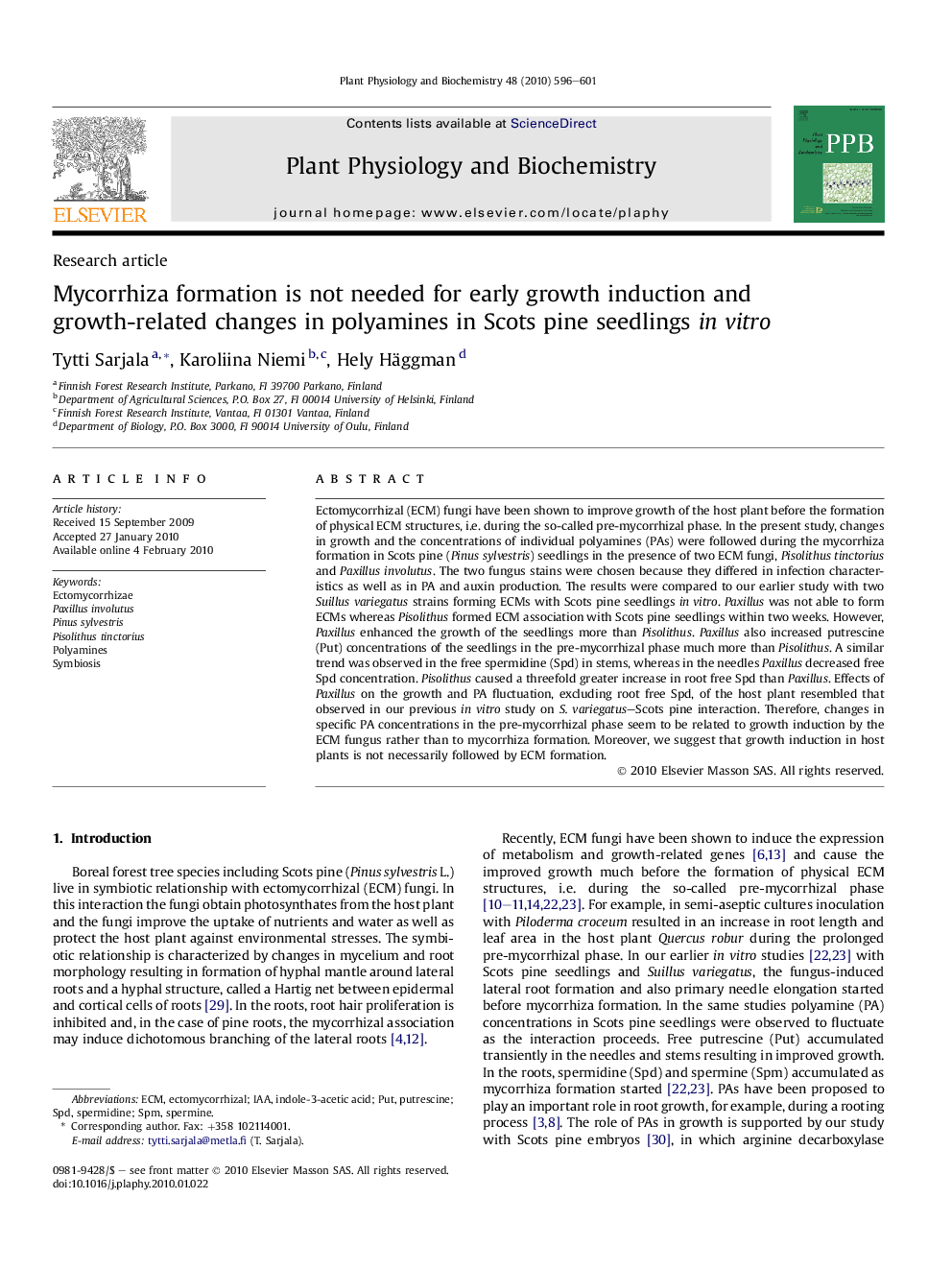| Article ID | Journal | Published Year | Pages | File Type |
|---|---|---|---|---|
| 2015375 | Plant Physiology and Biochemistry | 2010 | 6 Pages |
Ectomycorrhizal (ECM) fungi have been shown to improve growth of the host plant before the formation of physical ECM structures, i.e. during the so-called pre-mycorrhizal phase. In the present study, changes in growth and the concentrations of individual polyamines (PAs) were followed during the mycorrhiza formation in Scots pine (Pinus sylvestris) seedlings in the presence of two ECM fungi, Pisolithus tinctorius and Paxillus involutus. The two fungus stains were chosen because they differed in infection characteristics as well as in PA and auxin production. The results were compared to our earlier study with two Suillus variegatus strains forming ECMs with Scots pine seedlings in vitro. Paxillus was not able to form ECMs whereas Pisolithus formed ECM association with Scots pine seedlings within two weeks. However, Paxillus enhanced the growth of the seedlings more than Pisolithus. Paxillus also increased putrescine (Put) concentrations of the seedlings in the pre-mycorrhizal phase much more than Pisolithus. A similar trend was observed in the free spermidine (Spd) in stems, whereas in the needles Paxillus decreased free Spd concentration. Pisolithus caused a threefold greater increase in root free Spd than Paxillus. Effects of Paxillus on the growth and PA fluctuation, excluding root free Spd, of the host plant resembled that observed in our previous in vitro study on S. variegatus–Scots pine interaction. Therefore, changes in specific PA concentrations in the pre-mycorrhizal phase seem to be related to growth induction by the ECM fungus rather than to mycorrhiza formation. Moreover, we suggest that growth induction in host plants is not necessarily followed by ECM formation.
